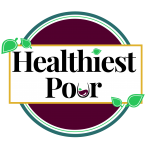WINE SCIENCE:
how to select polyphenol-rich wines
But first, I must poo-poo on Marketing Gimmicks
We live in a world today where marketing budgets seem to rule. Messages are carefully orchestrated and products glisteningly packaged to trick consumers into purchases. Often, the content of both the message and the product are sub-par at best.
If I walk into one more Whole Foods and see a “healthy wine” display featuring low calorie, low sugar or low alcohol wines (or some combination thereof), I might need to pay Jeff Bezos and his Board a visit.
To address the abovementioned factors first, most wines are low in residual sugar. Yeast attack sugar during fermentation and convert it to alcohol and other byproducts. When I see these low sugar/low alcohol wines I make the following conclusions. The grapes were harvested before they were fully developed and the optimal degree of sugar developed. Yes, the sugar in the final wine may be low, but not to a significant degree to any of the other wines who didn’t decide to market themselves as such. And, in addition to the sugars not developing, other sacrifices were made including the synthesis and development of phenols. Low alcohol wines may be an indication that fermentation was stopped early. In this case, that means there is some additional sugar floating around in the wine. OR, in the case of the wines that claim to be both low sugar and low alcohol, I simply deduce that the grapes must have come from a crappy vintage or vineyard where a) the sugars did not properly develop in the grapes and b) fermentation was a struggle. These wines suffer the ultimate flaw – they are out of balance – that is, the sugar, acid, alcohol and tannin in wine are in a state of perpetual disharmony.
This important diatribe is unintended to distract from the critical importance of the following section. Seeking well-made wines from winemakers with integrity and respect to tradition also leads consumers to wines that are rich not only in aromas and flavors, but in polyphenols which are of great benefit in human health.
Selection Criteria for High-Polyphenol Wines: Tips and What to Look For

Public Service Announcement
If it wasn’t clear from the crabby tone of the introduction, this is a slightly more gentle reminder not to fall victim to marketing gimmicks. Companies pay the Whole Foods of the world a nice sum of funds to hold prime time end caps or central displays. Since jargon like “low calorie” and “low sugar” resonates with many-a-misinformed shopper, they pocket the money and let the consumers buy into the ruse. If you want a quality wine, rest assured that you can find well-balanced wines that are low in residual sugar and calories, while high in polyphenols and personal satisfaction. Hope the above selection tips will be useful to you!


